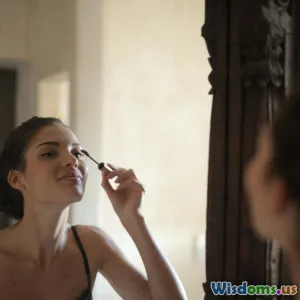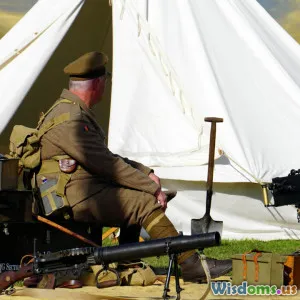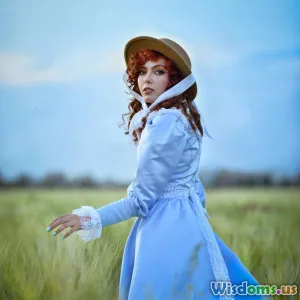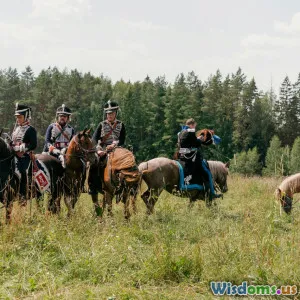
Ancient Egyptian Cosmetics: Beauty Rituals Revealed
8 min read Unveil the secrets of Ancient Egyptian beauty rituals and cosmetics that influenced timeless fashion and skincare traditions. (0 Reviews)
Ancient Egyptian Cosmetics: Beauty Rituals Revealed
Few ancient civilizations have captured the imagination like Egypt, famed not only for its monumental architecture and profound mythology but also for its pioneering beauty practices. The cosmetics and beauty rituals of the Ancient Egyptians reflect a sophisticated blend of artistry, spirituality, and practical skincare — practices that earned their place as among the earliest in recorded history. This article unearths the secrets behind these antiquated beauty routines, revealing how their legacy continues to inspire modern fashion and beauty cultures.
Introduction: More Than Mere Vanity
Unlike the common stereotype of ancient societies valuing beauty for superficial reasons alone, Ancient Egyptians saw cosmetics as an integral part of personal care, health, and spiritual well-being. Archaeological finds, hieroglyphic inscriptions, and preserved artifacts in tombs suggest that beauty practices were universal — transcending gender, class, and age.
Queen Cleopatra VII might be the most renowned figure associated with Egyptian cosmetics, but the reality is that people from all walks of life—pharaohs, priests, farmers, and artisans—participated in elaborate grooming rituals. The use of cosmetics served protective, magical, and social functions, reflecting status and piety.
Historic Overview of Egyptian Beauty Rituals
Origins and Everyday Use
Evidence indicates that Egyptians as early as 4000 BCE used natural pigments and oils for beautification and protection. Colors weren’t merely decorative but symbolic; for instance:
- Black kohl: Crafted from galena (lead sulfide), it was used extensively to line eyes. This not only reduced glare from the harsh sun but also protected the eye from infections due to its antibacterial properties.
- Green malachite: An eye shadow derived from copper carbonate, signifying rebirth and fertility, commonly worn by the living and the deceased.
The practical knowledge embedded in these cosmetics exhibited Egyptians' understanding of their environment and health dynamics.
Tools and Ingredients
Cosmetic jars, applicators made from wood or bone, and palettes carved from stone have been uncovered in tombs like that of Tutankhamun. These artifacts reveal how tools were designed for precise application.
Key ingredients transcended beauty to serve medicinal purposes, such as:
- Castor oil: Used as a moisturizer and to soften skin.
- Frankincense and myrrh: Incorporated into lotions and powders for fragrance and antibacterial qualities.
Their palettes would often mix deeply pigmented mineral powders with animal fats or waxes to make durable pastes.
Symbolism and Cultural Significance
Makeup was intertwined with Egyptian mythology and religion. For example, the distinctive eye makeup resembling the eye of Horus was thought to confer protection and divine sight. This symbolism made cosmetics a daily emblem of divine favor and protection.
Pharaohs and priests used elaborate cosmetic rituals during ceremonies to demonstrate their connection to the divine. Moreover, makeup differentiated societal roles; priests wore distinct styles symbolizing purity, while women of higher rank emphasized their status through intricate designs and fragrant oils.
Unique Cosmetics and Techniques
Kohl: An Iconic Eye Makeup
Kohl was much more than aesthetic; it moderated glare and testified to the hybrid of art and science in Egyptian culture. Its antiseptic effect helped to fend off eye diseases such as conjunctivitis—a truth validated by modern chemical analyses of pigments found on mummies’ eyelids.
Women and men coined bold designs expanding beyond mere lines — extending outward to create the classic elongated cat-eye look made famous in modern fashion but rooted in ancient tradition.
Lip and Cheek Colors
Ancient Egyptians were among the first to use red ochre combined with fats for lip and cheek blush. Contrasts like deep reds and earthy browns featured prominently in frescoes and statues, underscoring the importance of color symbolism—red often associated with vitality and energy.
Fragrance and Perfume
Perfumes held ceremonial importance—it was common to bless spaces and bodies with scents made from aromatic resins and essential oils. The Temple of Hathor recorded the use of fragrant oils and incense, cementing the status of perfumes as both luxury goods and spiritual tools.
Archaeological Revelations and Modern Inspirations
Recent excavations in Saqqara and Luxor have uncovered cosmetic sets — including palettes etched with instructions and pigment samples dating back 5000 years. Technological advances now allow researchers to analyze ingredient compositions, linking ancient recipes with contemporary natural skincare trends.
Cosmetics inspired by Ancient Egyptian motifs continue to influence the beauty industry:
- Leading brands incorporate kohl eyeliners drawing from traditional formulas.
- Organic skincare companies reimagine plant-based oils like castor and myrrh for moisturizers and anti-inflammatory creams.
Even fashion shows have staged dramatic makeup looks inspired by Egyptian eye designs, highlighting their timeless allure.
Conclusion: Timeless Beauty and Wisdom
Ancient Egyptian beauty rituals illustrate that cosmetics were much more than adornment—they formed an intricate art encompassing chemistry, spirituality, health, and identity. Their sophisticated use of ingredients and appreciation of aesthetics accounted not only for physical enhancement but also for protection and social communication.
The renewed interest in natural ingredients and symbolic beauty in today’s fashion and cosmetic industries underscores that the essence of Egyptian cosmetics transcends time, proving that their rituals were indeed well ahead of their era. As modern enthusiasts and professionals continue to draw from these ancient traditions, the Egyptian legacy of beauty shines on as a beacon of innovation and cultural richness.
References
- Lucas, A. & Harris, J. R., Ancient Egyptian Materials and Industries, Edward Arnold Ltd, 1962.
- Bard, K. A., An Introduction to the Archaeology of Ancient Egypt, Wiley-Blackwell, 2008.
- Eagleman, D. M. et al., "Analysis of mineral-based mascara residues", Journal of Archaeological Science, 2019.
- Smith, M., The Art of Beauty: Cosmetics in Ancient Egypt, Met Museum Publications, 2015.
Ancient Egyptian cosmetics are not only a fascinating historical subject but an enduring testament to the interplay of beauty, culture, and science.
Rate the Post
User Reviews
Popular Posts




















